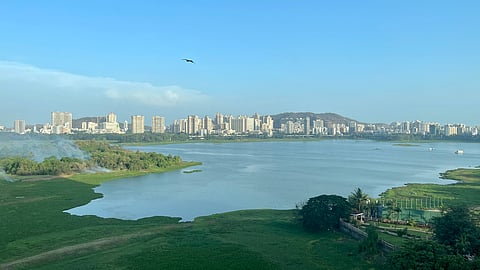Managing ‘blue-green’ spaces is key to mitigating hazardous heat in urban areas
Urbanisation is reckoned as one of the most salient events in human history as urban areas have played a major role in transforming the social, economic and political equations. However, decades ago, urban areas occupied a small fraction of the land but now, their rapid and extensive expansion has significantly modified the landscape pattern.
The United Nations (UN) has estimated that by 2050, the world’s urban population will increase by 68 per cent out of which 90 per cent increase would be witnessed by Asia and Africa. Urban areas occupy a small part of the globe’s land but their intensive growth has weighty changed the natural environment resulting in immeasurable effects. The rate of urban land proliferation is twofold times greater than urban populace globally.
By the end of the 21st century, the Land Surface Temperature (LST) of the planet is anticipated to increase up to 1.4-5.8 °C resulting in the increase of frequency and magnitudes of climate extreme events like wildfire, heat waves, glacier melts, high precipitations and droughts. Human mortality and morbidity, especially in the cities are expected to increase in the coming times because of the climatic crisis.
As global heating intensifies, cities are now also experiencing the threat of a rise in LST and Urban Heat Island (UHI). Several researchers have concluded that the climate crisis would result in the increase in temperature above 50°C thus, adding more than 10°C to the surface temperature in the urban areas.
The lethal heat stress (high temperature with high humidity that is hazardous to health) for living beings is expected to increase with exposure to high humidity and temperature above 35°C or low humidity with more than 40°C temperature.
These conditions of high temperature and high humidity have already been observed in Assam during the recent year; thus, unfolding the scenarios of fore-coming disasters that are to be welcomed by climate changes.
Urbanisation with associated Land Use and Land Cover (LULC) alterations often results in the depletion of air quality and temperature rise in the associated region.
These changes favor the formation of a modern phenomenon called Urban Heat Island (UHI) which is responsible for the modifications of local climate and increasing near surface temperature. When the heat storage capacity of the urban areas increases it results in the development of UHI.
An expansive body of literature also highlights that LST is a prominent parameter for measuring the status of urban health as the increase in LST is directly related with the growth of UHI. The LST pattern of a region provides important insights of the local climate and aid in understanding the urban micro-climate. This local difference in the temperature not only hampers the environment but also the living beings in several ways.
Shades of blue and green
It is vital to mention that, LST is highly influenced by the Urban Blue-Green Space (UBGS) as blue-green has the ability to significantly reduce the deleterious outcome of high LST and minimise the vulnerability of climate change in the urban areas as well as the development of UHI. It is evident that urbanisation grows at the cost of green and blue spaces of the associate regions.
Heat extremes are mainly observed in the tropical regions although the warming is not uniform across the latitudes but, the impact of surface temperature is not only limited to the tropics but is extended towards the mid-latitudes.
At present, the LST and UHI effects are not only experienced in the metros or large urban agglomerations but are also observed in the small cities and towns. As per studies, temperature in India has significantly increased in the last two decades. Like world average, temperature in India is rising at a higher rate resulting in the growth of UHI in almost all the states and UTs.
Developing countries like India where the trend of population migration is towards the urban centers results in extensive urban sprawl at the cost of blue and green peripheral areas.
Understanding and exploring the alterations in LULC, LST and UHI in the urban area is vital for both the inhabitants and local government. Presently, one in every three people resides in urban areas thus resulting in the sprawling of the urban areas at a high pace.
These processes are not just limited to the mega cities but are now observed in almost all the towns or cities. Therefore, highlighting the bitter fact that; the population’s step towards the urbanised lifestyle is at the expense of the healthy globe.
Way ahead
According to Census of India (2011), during 2001-2011, urbanisation in India increased by 27.8 per cent to 31.1 per cent, leading to an increase in the LST and modified the micro-climate of the urbanised regions. The waning of UBGS and gradual modification of the landscape due to urbanisation often results in the deterioration of urban health.
Although the climate is changing at a high pace, it is noteworthy that it can be minimised as well as mitigated through proper strategies.
The increasing rate of surface temperature and growth of UHI can be minimised to a safe extent by the development of UBGS, use of sustainable urban surface fabric, proper infrastructure and other practices which can be easily followed by the population.
Similarly, the policy makers and planners may also initiate mentioned strategies and regulations for minimising the hazardous impact in the local climate. Thus, it is important to understand that unplanned and uncontrolled urbanisation triggers a set of allied fallouts.
The author is research scholar at Dibrugarh University
Views expressed are author's own and do not necessarily reflect that of Down To Earth

